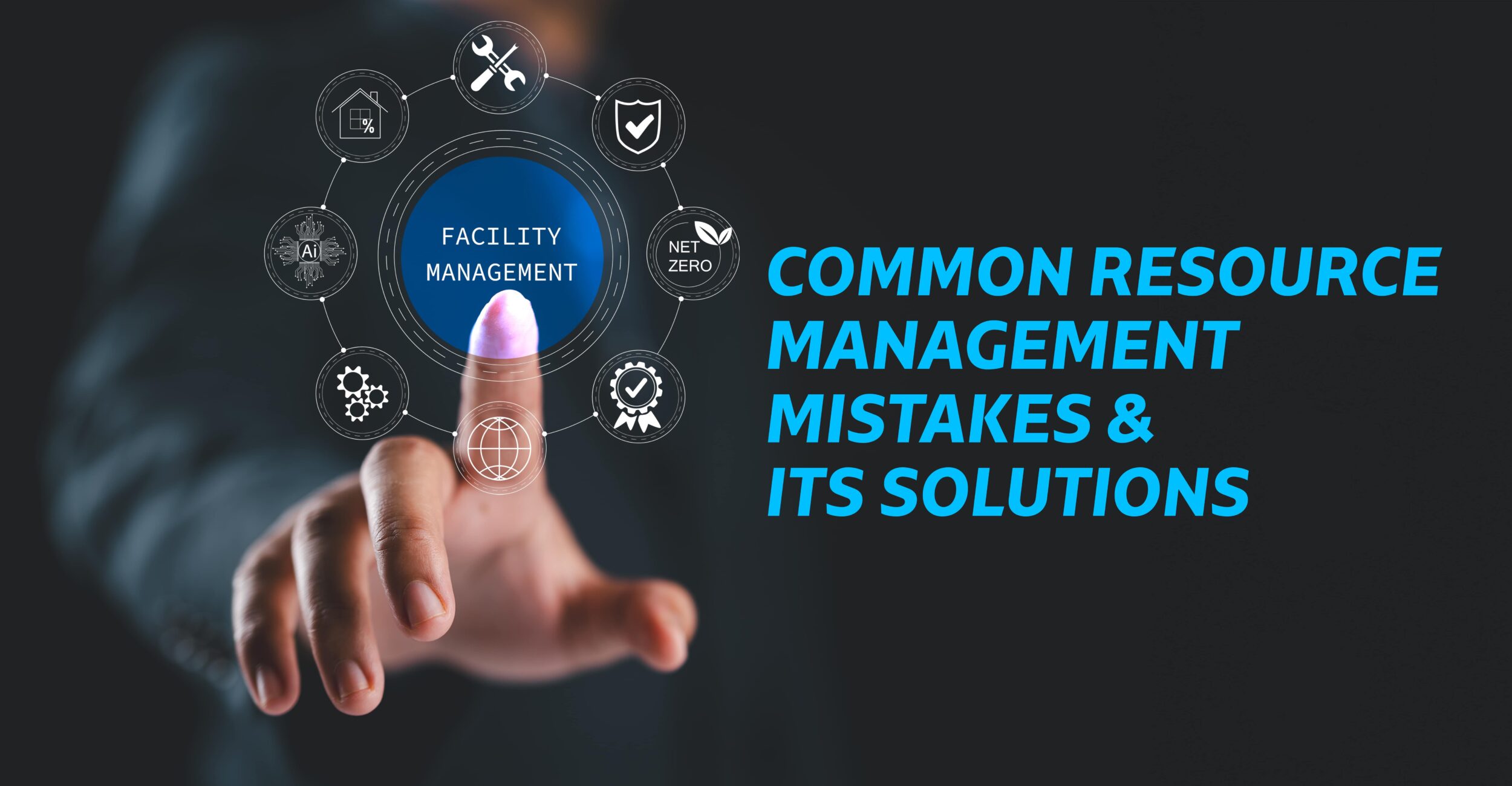Government project directors encounter resource management as their most demanding challenge, with high-risk consequences when dealing with capital projects. All capital projects need extensive planning to coordinate human operations, machines, and resources. Multiple initiatives face project delays, budget overruns, and frustrated stakeholders because of resource mismanagement despite good intentions, leading to losing taxpayer money.
Government agencies are often responsible for overseeing multiple large-scale projects simultaneously, each with its own complex set of moving parts. Managers in this scenario must elevate resource allocation from operational execution to a vital strategic component. Proper resource planning determines the destiny of successful projects and those that experience uncontrolled growth.
Top-performing project leaders have implemented what differentiates their practices. Project managers in distress must discover techniques to restore control over their resource planning systems and achieve greater confidence in managing their resources effectively. First, we need to study the most repeated failed methods.
Common Resource Management Mistakes
Professional project directors often make standard resource management errors despite their experience in the field. These are the most common mistakes that project managers make.
1. Over-reliance on spreadsheets instead of centralized systems
Agencies continue using spreadsheets as their main system for monitoring resource allocations. However, spreadsheets’ apparent user-friendliness contradicts their basic design restrictions. This process creates a high probability of errors because it requires human input, and teams stay uninformed because they lack access to real-time information. Operation efficiency suffers from this connectivity gap, along with communication problems and extended project timelines.
2. Lack of foresight in workforce and material planning
An inaccurate prediction of labor supply alongside materials causes projects to face major difficulties. When teams fail to predict demand peaks and resources’ procurement duration, they make expensive, rushed acquisitions or experience resource-based delays.
3. Poor coordination between procurement and project timelines
Procurement bottlenecks are a common culprit behind missed project milestones. When procurement teams and project managers aren’t aligned, essential materials and equipment may not arrive when needed, stalling progress and creating costly domino effects across the project timeline.
4. Inaccurate forecasting leading to waste or shortages
Forecasting resource needs based on outdated or incomplete data frequently results in either excess materials sitting unused or critical items being unavailable at key moments. Both outcomes create inefficiencies and eat into the project budget.
5. Inefficient allocation of labor and equipment
Misaligned labor and equipment utilization can have a direct financial impact. Overloaded personnel may burn out, lowering productivity and morale, while underutilized equipment leads to unnecessary rental or ownership costs.
6. Inconsistent reporting on resource utilization
Without standardized reporting mechanisms, project directors struggle to get an accurate picture of resource usage. This lack of transparency makes it difficult to make data-driven adjustments or apply lessons learned to future projects.
7. Lack of contingency planning for resource shortages
In dynamic project environments, unforeseen issues are inevitable. Yet, many teams fail to create robust contingency plans for resource disruptions, leaving them scrambling when problems arise.
Feel like you’re making some of these mistakes too?
Don’t worry—you’re not alone. Take our free Capital Project Assessment to see where your resource management stands and how you can fix it.
The Solution: Best Practices for Resource Management

The good news? These common pitfalls are entirely avoidable with the right strategies and tools. Here’s how top-performing project leaders are addressing resource management challenges:
Implement a PMIS for Real-Time Resource Tracking
A Project Management Information System (PMIS) acts as a centralized hub where all project data—including resource allocation—is stored and updated in real time. By giving all stakeholders access to the same live data, a PMIS system enables better collaboration, reduces waste, and supports more informed decision-making.
Use AI-Driven Forecasting
AI-powered forecasting tools analyze historical data, project trends, and current resource usage to predict future needs with impressive accuracy. By leveraging predictive analytics, project directors can proactively manage shortages, prevent over-purchasing, and adjust plans before issues arise.
Automate Procurement Workflows
Manual procurement processes are a major bottleneck. Automating key workflows—such as approvals, order tracking, and vendor communications—helps ensure that materials and equipment are procured on schedule, reducing unnecessary downtime.
Improve Cross-Department Communication
Many resource issues stem from poor coordination between departments. Integrating communication tools within your PMIS project management ensures that procurement, project management, and field teams stay aligned, preventing the misallocation of critical resources.
Optimize Budget Utilization
With real-time tracking of resource spending, project managers can allocate funds more effectively, avoiding overspending while ensuring that essential resources are always available. This also strengthens adherence to budget constraints and improves project outcomes.
Establish Standardized Resource Allocation Models
Developing standardized models for how resources are allocated across projects creates consistency and reduces guesswork. These models should be adaptable to each project’s unique demands while maintaining clear guidelines that minimize inefficiencies.
Enable Proactive Issue Resolution
Predictive analysis tools can flag potential resource bottlenecks before they escalate into critical delays. This proactive approach allows teams to solve problems early and keep projects on track.
Ready to manage resources like top-performing project leaders?
Take the free assessment to discover which strategies will work best for your projects.
OnIndus Expertise: Helping Government Agencies Optimize Resource Utilization
At OnIndus, we specialize in helping government agencies transform their approach to resource management. By implementing customized PMIS solutions, we’ve helped organizations reduce inefficiencies, optimize budgets, and achieve project success.
Here’s what our clients typically experience:
- 20% reduction in wasted resources by eliminating redundancies and improving tracking mechanisms.
- 35% increase in workforce efficiency through optimized scheduling and streamlined workflows.
- Real-time visibility into resource allocation, enabling proactive planning and minimizing downtime.
- Improved coordination between departments, fostering seamless communication and project execution.
- Stronger budget alignment, leading to more effective financial planning and resource deployment.
- Reduced project downtime, preventing costly delays and keeping projects on schedule.
- Increased stakeholder confidence, ensuring project directors have the right tools to deliver on time and within budget.
Case Study: Resource Optimization in Public Infrastructure Projects
In one notable engagement, OnIndus partnered with a government agency overseeing a public infrastructure project suffering from chronic resource mismanagement. The agency was facing repeated delays, bloated costs, and frustrated project teams.
By implementing a tailored PMIS solution, we transformed their approach to resource management:
- We streamlined resource allocation through automated workflows.
- AI-driven forecasting improved accuracy, preventing shortages and waste.
- Procurement processes were automated, eliminating bottlenecks and reducing downtime.
The result? The agency saw a 30% improvement in overall project efficiency and achieved $5 million in cost savings over two years.
Conclusion
Resource mismanagement doesn’t have to be the norm in government capital projects. By leveraging modern tools such as PMIS system, PMIS platforms, AI-driven forecasting, and automated procurement workflows, project directors can take control of their resources, improve efficiency, and deliver impactful results.
At OnIndus, we help project leaders implement best practices tailored to the unique complexities of government projects. Ready to stop firefighting and start optimizing?
Tired of resource chaos and costly delays?
Let’s change that. Take our quick, no-cost assessment and get a roadmap to smarter, stress-free resource management.

